Winter in the Arboretum
With most of the leaves off the trees, it is easy to think that there isn’t anything interesting to notice in the arboretum. But winter provides an opportunity to observe aspects of trees that one doesn’t notice when everything is green. I’ve been enjoying looking for interesting patterns in the trees around campus to document in the arboretum Instagram account (http://instagram.com/vutrees/). I’m going to include some of those images in this blog post.
Patterns
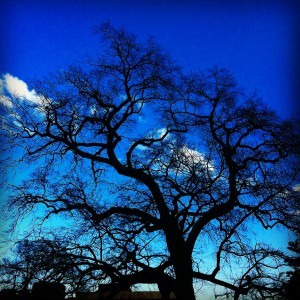
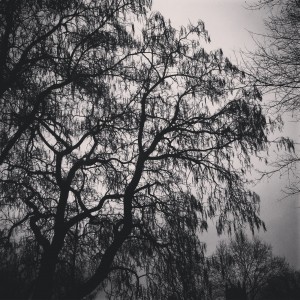

In winter, the silhouettes of trees against the sky make the characteristic shapes of the trees apparent from sculpted oaks to drooping catalpas. On a sunny day the bone-white bark of sycamores is striking.
Bark
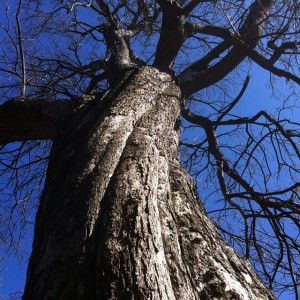
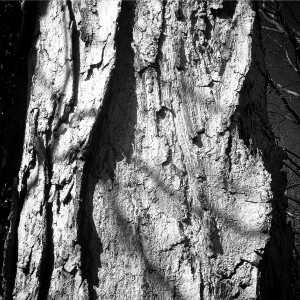
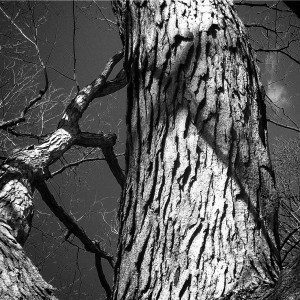
Although bark is visible year-round, the bright sunlight hitting the trunk unobstructed by leaves makes the patterns more apparent in winter: twisted, sculpted, or shaggy.
Leaves
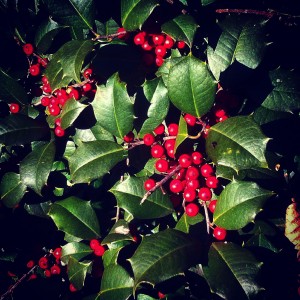
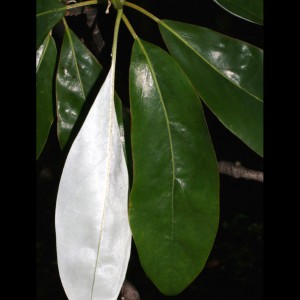
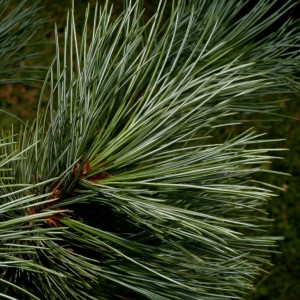
Although we have the tendency to think that trees lose their leaves in winter in Tennessee, that isn’t true for every species of tree. The shiny evergreen leaves of American holly are familiar to most. This time of year, those leaves are set off by bright red berries. The arboretum has many excellent examples of holly trees. The ones that flank the front door of Godchaux Hall are noteworthy and are probably the largest on campus. The large evergreen leaves of southern magnolia are also well-known. Less obvious is sweetbay (Magnolia virginiana), a cousin to southern magnolia that has smaller, evergreen leaves with shiny, white undersides. The large specimen along the south wall of Kirkland Hall is the largest on campus and a former state champion. Let’s also not forget the pines. Although we may not think of them as so, the needles of pines are actually leaves. Eastern white pine (Pinus strobus) is a commonly planted pine in this area and it can be found many places on campus. You can tell its needles from those of most other pines by the white “stripes” of stomata that run the length of its needles and give the foliage a distinctive appearance.
Flowers
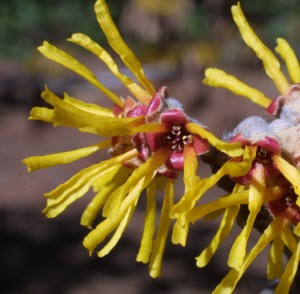
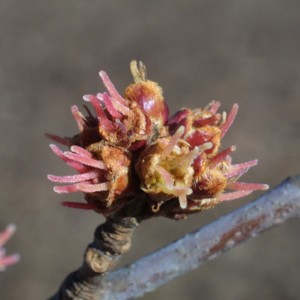
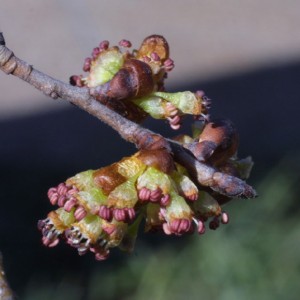
Although most trees bloom in the spring, summer, or fall, there are a few that bloom in winter. Perhaps the most crazy species we have on campus are the witchhazels. American witchhazel (Hamamelis virginiana) blooms into mid-December. Ozark witchhazel (Hamamelis vernalis) begins blooming as early as January and can be seen blooming now in front of the Divinity School on Library Lawn. There are also a number of wind-pollinated tree species that start blooming in late winter before there are leaves to obstruct the passage of their pollen through the air. The earliest of these is silver maple (Acer saccharinum), which is already blooming in mid-February. It’s easy not to notice it’s tiny flowers because they aren’t colorful. By the end of February, silver maple is joined by red maple (Acer rubrum) and Amercian elm (Ulmus americana). By then, allergy-sufferers are already starting to sneeze from the effects of the late-winter pollen clouds. But they can take comfort from the knowledge that spring is just around the corner!

Steve Baskauf is the communications coordinator of the Vanderbilt Arboretum and a senior lecturer in the Biological Sciences Department at Vanderbilt University. He can be contacted at steve.baskauf@vanderbilt.edu.
Sources of published images:
sweetbay leaf image: http://bioimages.vanderbilt.edu/baskauf/52416
white pine needle image: http://bioimages.vanderbilt.edu/baskauf/54727
Ozark witchhazel flower image: http://bioimages.vanderbilt.edu/baskauf/17439
silver maple flower image: http://bioimages.vanderbilt.edu/baskauf/17523
American elm flower image: http://bioimages.vanderbilt.edu/baskauf/17569